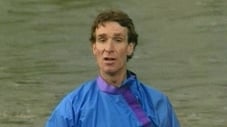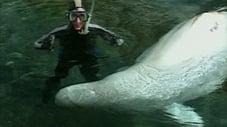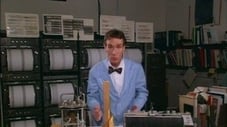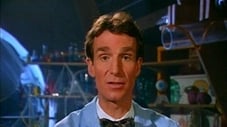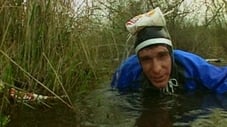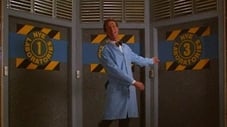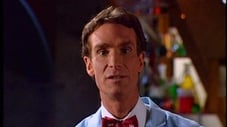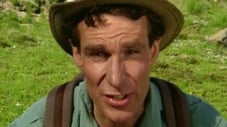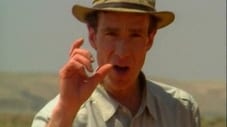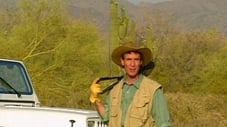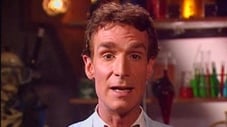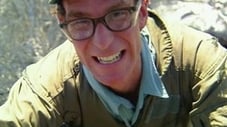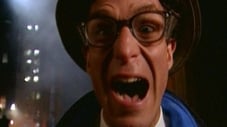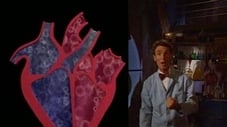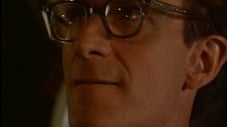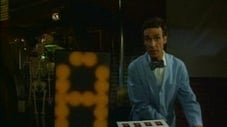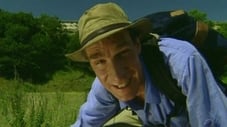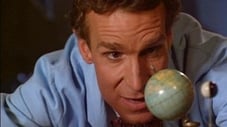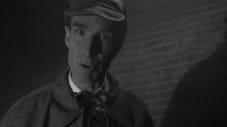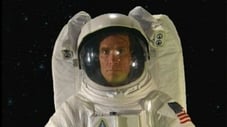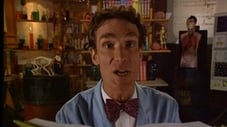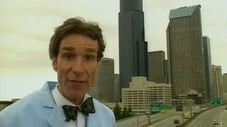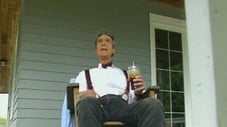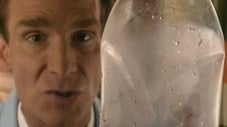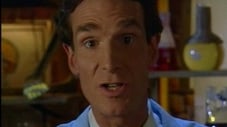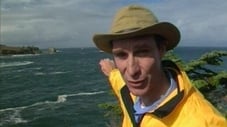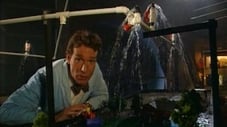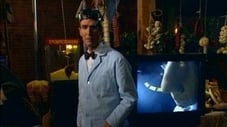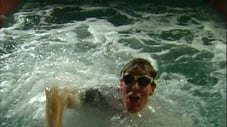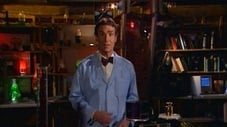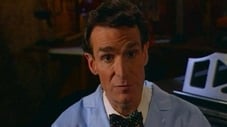Rachel Glenn as Nancy
Episodes 40
Rivers & Streams
Water is massive; rivers are powerful. As rivers flow downhill, they wear away rock and soil to form canyons or winding curves in the land, called meanders. Sometimes rivers fill and overflow their banks. Rivers with too much water create floods that can carry away plants, trees, buildings and boulders. Rivers and streams support most of the ecosystems on land.
Read MoreNutrition
All food, whether it’s protein, fat, carbohydrates, vitamins, or minerals, is made of chemicals. When your body gets a hold of these chemicals, it recombines them and makes energy. Different types of food make different amounts of energy, which are measured in calories. How do scientists figure out the amount of calories in food? In this episode, Bill will reveal the secrets of the bomb calorimeter – an instrument of food science.
Read MoreMarine Mammals
Whales, dolphins, otters, walruses, and orcas are just like us, they’re mammals. Well, they’re not just like us. They live in the ocean. They breathe air, have hair, nurse their babies, and they are warm-blooded. They keep the same body temperature all day. To do that in the ocean isn’t easy. Water soaks up heat, so the ocean is really pretty cold. Marine mammals have all sorts of ways to keep warm. Whales, dolphins, and walruses have thick layers of fat called “blubber.” It’s great insulation. It holds their body heat keeping them warm in the cold ocean. Sea otters have thick layers of fur that cover their whole bodies. Otters fluff their fur to trap air between the hairs. It helps them float, it the air keeps them warm even when they dive deep hunting for food. These adaptations make it possible for marine mammals to live all over the world’s oceans.
Read MoreEarthquakes
Earthquakes happen when pieces of land in the Earth’s crust scrape together. The crust of the Earth is made of big slabs of land called plates that are constantly moving just a little bit. The plates scrape by one another, and sometimes they don’t move smoothly. An earthquake happens when the plates get unstuck suddenly and jerkily slip past each other. The majority of earthquakes occur along plate boundaries such as the boundary between the Pacific Plate and the North American plate. One of the most active plate boundaries for earthquakes is the massive Pacific Plate commonly referred to as the Pacific Ring of Fire. The fire comes from the volcanoes that form near the edge of the plates.
Read MoreNTV Top 11 Video Countdown
Join Bill Nye as he counts down the hits from the Soundtracks of Science. Along with the music, Bill does a few new experiments on the lab bench. You’ll see the grunge band Nyevana’s classic “Air Pressure,” Momentisey’s “The Faster You Push Me,” and divas En Lobe’s “Whatta Brain.” There’s even a special appearance by Mudhoney, a real band from Seattle. But if you want to know who’s the number one artist from Not That Bad Records, you’ll have to tune in.
Read MoreSpiders
Be sure to get this straight: spiders are not insects, they’re arachnids. Spiders have eight legs, and insects have only six. Spiders have two body parts, a head and an abdomen, while insects have three body parts, a head, a thorax, and an abdomen. Insects have antennae, and spiders do not. Some insects sting. All spiders have fangs and venom. There are almost certainly a few spiders in the room with you right now.
Read MorePollution Solutions
Dirty water, land, and air are a result of pollution. People are the only animals on Earth that make pollution. Garbage, burning fuel, chemicals, sewage, oil, and pesticides are all human-made things that make the Earth’s atmosphere, water, and soil unclean. Humans are even leaving trash in space, such as broken satellites, pieces of metal, paint from rocket skin, and even cameras and toothbrushes. Much of the junk people make and leave behind hurts plants, animals, you and me.
Read MoreProbability
Probability is a way to measure how likely it is that something will happen. Probabilities are predictions. They’re often just very careful guesses. When a scientist wants to calculate a probability, she or he gathers data and then uses the data to make her or his guess. Probabilities are between 100% (it’s definitely going to happen) and 0% (forget about it, pal, it’s not going to happen). Most things have a probability somewhere in between.
Read MorePseudoscience
People once thought that world was flat or nearly flat. It was considered a bit crazy to think of it as a big ball. But it is. You can prove it. One of the big ideas in science is that ideas can be tested. Scientists test claims. If one scientist claims that she or he can fill a balloon with invisible gas using vinegar and baking soda, other scientists can try it and see if they get the same result. Sometimes ideas are wild, extraordinary. And, the claims that go with these way-out ideas are pretty extraordinary as well. The round Earth is an example of an extraordinary claim that needed extraordinary proof. But, there are many people, who believe in extraordinary claims without looking for extraordinary proof. We scientists are always on the lookout.
Sometimes ideas are wild, extraordinary. And, the claims that go with these way-out ideas are pretty extraordinary as well. The round Earth is an example of an extraordinary claim that needed extraordinary proof.
Read MoreFlowers
Flowers are an important part of many plants. Plants use flowers to make other plants – to reproduce. Flowers have special parts, called stamens and pistils. When pollen from the stamen finds its way down through the pistil, the flower is pollinated, and seeds start to grow. The seeds eventually find their way to the ground, the seeds sprout, and more plants are born.
Read MoreArchaeology
Archaeologists are kind of like detectives. They’re scientists who snoop through old or ancient people’s things to find out what life was like thousands of years ago. Archaeologists find ancient cities, tombs, and temples by taking aerial photographs of Earth, by reading old documents, or by just looking at the shape of the land. When they think they’ve found a site, the archaeologists pick up a shovel and start digging. When archaeologists get close to an object, they dig very carefully. Sometimes they dig with nothing but a toothpick and a paintbrush. Whew!
Read MoreDeserts
About 20% of the Earth is a desert. Deserts are places that get very little precipitation (rain or snow) each year, and that makes them extremely dry. Deserts cover big areas of land. The biggest desert, the Sahara, extends from North Africa to Southwest Asia and is 13 times the size of Texas. Some parts of the Sahara get as little as 2 millimeters (0.08 inches) of water a year.
Read MoreAmphibians
Frogs, toads, salamanders, newts, and caecilians (worm-like animals that have backbones) are all amphibians, animals that spend part of their lives in water and part on land. Amphibians are slimy. Amphibians are cold-blooded that means their body temperature changes with the temperature outside. And as amphibians grow up, they go through metamorphosis.
Read MoreVolcanoes
Volcanoes are mountains made from molten rock. The Earth’s crust is divided into big slabs, called plates, which are slowly moving all the time. The plates are floating on the Earth’s mantle, a layer of gooey hot rock that flows like maple syrup. Some places in the mantle, the rock gets very hot and nearly liquid. It’s called magma. Sometimes the magma reaches the Earth’s surface and forms a volcano.
Read MoreInvertebrates
Worms, squid, clams, and flies are spineless creatures. They’re not afraid, they’re invertebrates – animals that don’t have backbones. Invertebrates are everywhere. You can find invertebrates in the sea, in freshwater, and on land. There are about 30 times more invertebrates than vertebrates on Earth.
Read MoreHeart
Your heart pumps your blood around your body, all hours, every day of the week, to keep you alive. Your heart is about the size of your fist, and it’s made of special muscle called “cardiac” (KAR-dee-ak) muscle.
Cardiac muscle lets your heart keep the beat, it can also speed up or slow down, depending on what your body needs. Your heart works like an automatic pump – it squeezes, or contracts, and un-squeezes, or relaxes, to push blood through the four different sections of your heart. Valves, special one-way openings, are like little doors between the sections – making sure your blood moves in only one direction through your heart, to your lungs, back to your heart, and then around your body again.
Read MoreInventions
Almost everything around you, from paper clips to computers, was thought of, designed, and built by humans. An invention can be a totally new idea, or an improved variation on something that already exists. Inventors invent to solve problems and make life easier. Anyone can be an inventor, even you. All you need is an idea, and sometimes you don’t even need that. Silly Putty, sticky notes, X-rays, pretzels and nylon were all accidents that became great inventions after more research, experimentation, and design.
Read MoreComputers
With special guest, Mick H. Computers are used throughout the world all the time. Computers are in cars, calculators, televisions – you’re even using one right now. Humans use computers to take information – things like pictures, words, numbers, and sound, and turn it into electricity. The information is changed into a pattern of electrical pulses, a bunch of electricity “ons” and “offs.” The computers are designed so that they can tell the difference between pieces of information by the different patterns of “ons” and “offs.” Computers change the information you give them, turn it into electrical pulses, make changes to it, and give it back to you in a form you can understand in a matter of thousandths of seconds. It’s not the computers, it’s the electricity that makes computers so fast.
Read MoreFossils
Most dead animals and plants break up, get decomposed, and become part of the soil, but some turn into fossils. A fossil forms when a plant or animal dies, and gets buried. If conditions are right, water gets into the fossil bed, and chemical reactions preserve the impressions for thousands or millions of years. There are different types of fossils — imprints of animals, black carbon outlines, hardened bones, or actual animals and plants that have been trapped in ice or hardened tree sap.
Read MoreTime
Time affects every living thing on Earth. Trees shed their leaves. Some animals only come out at night. There are even insects that only emerge every 17 years. Days, hours, minutes, and seconds – all of these were invented by humans. Humans came up with these units of time to organize their lives and to study the world. One of the first ways humans told time was by noticing the difference between daytime and nighttime. Humans use the Earth revolving around the Sun to divide time into years and seasons. Months are based on the movement of the Moon around the Earth. A day is when the Earth spins completely around its own axis.
Read MoreForensics
Forensic scientists try to find out the who, what, when, where, and why of events in the past – crimes. Most forensic scientists work in police labs. They collect evidence from the scene of a crime and analyze the evidence in a lab. Forensic scientists look for clues that will help them solve a crime. Fingerprints, footprints, hair, blood, and traces of gunpowder can be helpful evidence. Forensic scientists use all sorts of scientific instruments to analyze even the smallest bit of hair or the tiniest chip of paint. By scientifically testing evidence from the crime scene, and by knowing about evidence from past cases, forensic scientists can piece together what happened, to figure out who did what, and to help police catch a criminal.
Read MoreSpace Exploration
Space is hard to explore, because it’s really, really big. Most things in space are so far away that people we build special equipment just to see them. We use telescopes to magnify far-away solar systems, planets, and stars. Rockets send astronauts past the Earth’s atmosphere. Space probes with special cameras send back pictures of planets for scientists to study. Astronauts perform experiments in orbit around the Earth. We do all these things and more to learn more about our universe.
Read MoreGenes
The color of your eyes, the shape of your nose, and the straightness (or curliness) of your hair depend on your genes. Not jeans the pants, but genes, the long strands of chemicals in your cells. Genes are like a blueprint for your body, and your cells follow the blueprint to build you. All living things have genes in their cells. You get your genes from your parents – half from your mom and half from your dad. Your parents got their genes from their parents, your grandparents. Living things pass down their genes from generation to generation. Genes from a mother’s egg cell mix with genes from a father’s sperm cell to make a complete set of plans for a baby. Baby humans, baby dogs, and baby plants all grow up to look like their parents because of genes.
Read MoreArchitecture
Towers, teepees, castles, and condominiums – some kind of planning goes into all buildings, no matter how big or small. Architects are people who design buildings, and the areas around buildings. Usually architects draw on a computer or a big desk (a drawing board). The plans show the dimensions of all parts of a building. Architects try to design with the purpose of the building in mind, but even buildings used for the same thing can look very different.
Read MoreFarming
Before food gets into your kitchen, before it even gets to the store, it’s on a farm. Almost everything we eat is grown on a farm, an area of land used to raise animals and plants. Farming nowadays can get pretty complicated. Farmers are scientists – agricultural scientists. Farmers work hard to keep their farms healthy. Soil is stirred up to get oxygen to the microorganisms that live in between the grains and to plant roots – that’s called tilling the soil to aerate it. Plants need to be protected from pests with either chemical pesticides or biological pesticides. Animals like bats and friendly insects eat other pest insects (chomp,chomp). Animals are milked, corralled, fed, sheared, slaughtered or cleaned-up after.
Read MoreLife Cycles
My, how you’ve grown! The popular exclamation from your Auntie may be no great revelation, but growing bigger is a part of life. In fact, it’s part of the whole cycle, or pattern, of human life that began with your birth. The different stages in life are called life cycles. Humans aren’t the only ones with life cycles. At first, you might think that you have nothing in common with a cactus in the desert, or a fish in the sea, or the mold in your gym shoe, but you do. You’re all alive. You all have or will experience birth, growth, reproduction, aging, and eventually, death.
Read MoreDo-It-Yourself Science
Do-it-yourself science involves a question, observations, a hypothesis, and experimentation. You have probably come up with questions after you noticed something unusual. For instance, why do fingers get all pruny and wrinkled when I sit in the tub? The observation – shriveled fingertips – is the first step. Do-it-yourself science requires an eye for details surrounding your observations. Collecting related information helps you get to the next step, what scientists call a hypothesis, or “educated” guess. After weighing all the evidence, you hypothesize that your fingers get pruny because of the hot water in the tub. Once you have a hypothesis, it’s time for the fun part – testing it out.
Read MoreAtoms & Molecules
Atoms are reeeeally small. They are so small that you can’t see them with just your eye. It takes as many as 10 million of them side-by-side to measure a single millimeter. In fact, atoms are the smallest pieces of “stuff” that are still considered “stuff.” If you take something and break it into tiny pieces, and then break it into tinier pieces, and keep going, the smallest part you’d be left with (and still have the same substance that you started with) is an atom. Atoms are the building blocks of all matter. Everything is made of only 109 different kinds of atoms, called elements. 92 of these elements occur naturally, but the rest of them – ones like Technetium and Promethium have only been found in distant stars and Californium and Einsteinium – are only made in laboratories. A molecule is born any time two or more atoms combine together.
English
Read MoreOcean Exploration
Ocean exploration is a tricky, risky business since humans can’t naturally survive under the ocean. Ocean explorers are constantly inventing new tools to help them dive deep into the sea. Over the last few hundred years or so, and especially in the last few decades, we humans have come up with all kinds of new ways to study the ocean. Even so, the ocean remains largely unexplored. It’s huge, cold, salty, and deep. Ocean exploration helps us understand our planet, and may help us solve the mystery of how life started on Earth.
Read MoreLakes & Ponds
What do you get when you have a big hole in the ground and some water? Lakes and ponds. All lakes and ponds have one thing in common – they happen when a basin, or hole, forms, and then fills with water. A glacier may grind a long gulch, volcanoes and earthquakes may make a sinkhole, or engineers may build a dam – they can be human or beaver.
Read MoreSmell
How do noses work? Objects give off tiny amounts of tiny molecules into the air. When just a few of these molecules get up your nose, they dissolve in the mucus up there. Some molecules come into contact with special receptors on what’s called your “olfactory membranes.” Each nostril has a membrane, and each membrane is only about the size of a postage stamp. The membranes hold millions of receptor cells, each of which are ready to send messages to the brain about the molecules that go up your nose.
Read MoreCaves
Caves come in all different shapes and sizes depending on how they were formed. Spelunkers (people who explore caves) have plenty of descriptive names for caves and the natural rocky features that form within them – soda straws, fried eggs, popcorn and draperies are just a few. Caves can be as simple as one straight passage with a few stalactites overhead, or as complex as a labyrinth, with many stalagmite-carpeted rooms.
Read MoreFluids
Fluids are cool; they ooze and swoosh. Whatever container you put a fluid in, that fluid will take the same shape. Milk poured into a pitcher forms to the shape of the pitcher. If you pour it into a glass, it takes the shape of the glass. You just can’t do that with a boulder. But with the right container, you could pour liquid rock from below the Earth’s crust. Fluids still act like fluids, even halfway to the center of the Earth.
Read MoreErosion
Dirt, sand, and rock from the Earth’s surface gets blown, sliced, torn, swallowed and distributed all over the world. What was yesterday’s hill is tomorrow’s flat plain. The planet looks a lot different than it did when it formed four and a half billion years ago. The force of erosion, the slow wearing away of the land, has never ceased.
Read MoreComets & Meteors
Outer space is full of stuff. We’re not just talking about planets and moons. There are some bits and pieces, too small to be noticed most of the time that float around and occasionally run into all those planets and moons. Comets and meteors are the big bits of dirt, rock and ice that inhabit our Universe. More than just high-speed space chunks, comets and meteors carry important information about the history of our Universe.
Read MoreStorms
Storms are big, loud, and often accompanied by rain, snow, sleet, or hail. Where do these wild, dangerous, and necessary tornadoes, hurricanes, and thunderstorms come from? Storms happen when huge different air masses collide. Along the border of these air masses, water vapor condenses into clouds, strong winds form, and the clouds rub against each other with the ground often becoming electrically charged waiting to send lightning bolts across the sky. What starts out as a placid summer day turns into two air masses boxing it out 10,000 meters up.
Read MoreMeasurement
Did you know that the Concorde moves 300,000 times faster than a land snail? Or that a giant redwood can be as tall as a 35-story apartment building? The only reason we can make these comparisons is because people have measured these things. We don’t compare jets and snails every day, but we do rely on measurement constantly. When you take your temperature, you find out how it compares to the temperature of someone who is healthy. When you bake brownies, you’ll need to measure the ingredients first to make sure they turn out tasty. Using measurement, we can make useful comparisons of distance, time, mass, and temperature.
Read MorePatterns
Every time you look at something, hear something, touch something, smell something, or taste something, your brain collects a little information about the world around you. You may even have a scrapbook to store memories of some of that information. There’s a lot out there though. How do people sort out the valuable information from the not-so-valuable?
Read MoreScience of Music
Music is the art and science of expressing ideas and feelings through sound. A sad song can say more about how someone feels than most words, and a familiar song can make crowds clap together and feel like one happy family. Whatever the emotion, music seems to have a way to communicate it. The music we listen to today is the result of years of experimentation with sounds. As people figured out what they liked best, they invented instruments that could play their favorite tones and developed popular rhythms, or patterns of beats. Each note of music, and every tone of each instrument is a sound wave. Some sound waves sound great together. Some not so good. Getting the exact soundwaves in the pattern you want – now that’s science.
Read MoreMotion
Things can appear to be moving, when they really aren’t. Sometimes an object might seem to be at rest, even when it is in motion. It’s all relative. Relative motion, that is. How things appear to move depends on how you, or any observer, happens to be moving. So, if you’re on a bus looking out a window into another bus, and your bus begins to back up slowly, you may think the other bus is moving forward, when really it’s not moving at all. That’s motion in motion. It happens all around us all the time.
Read More
